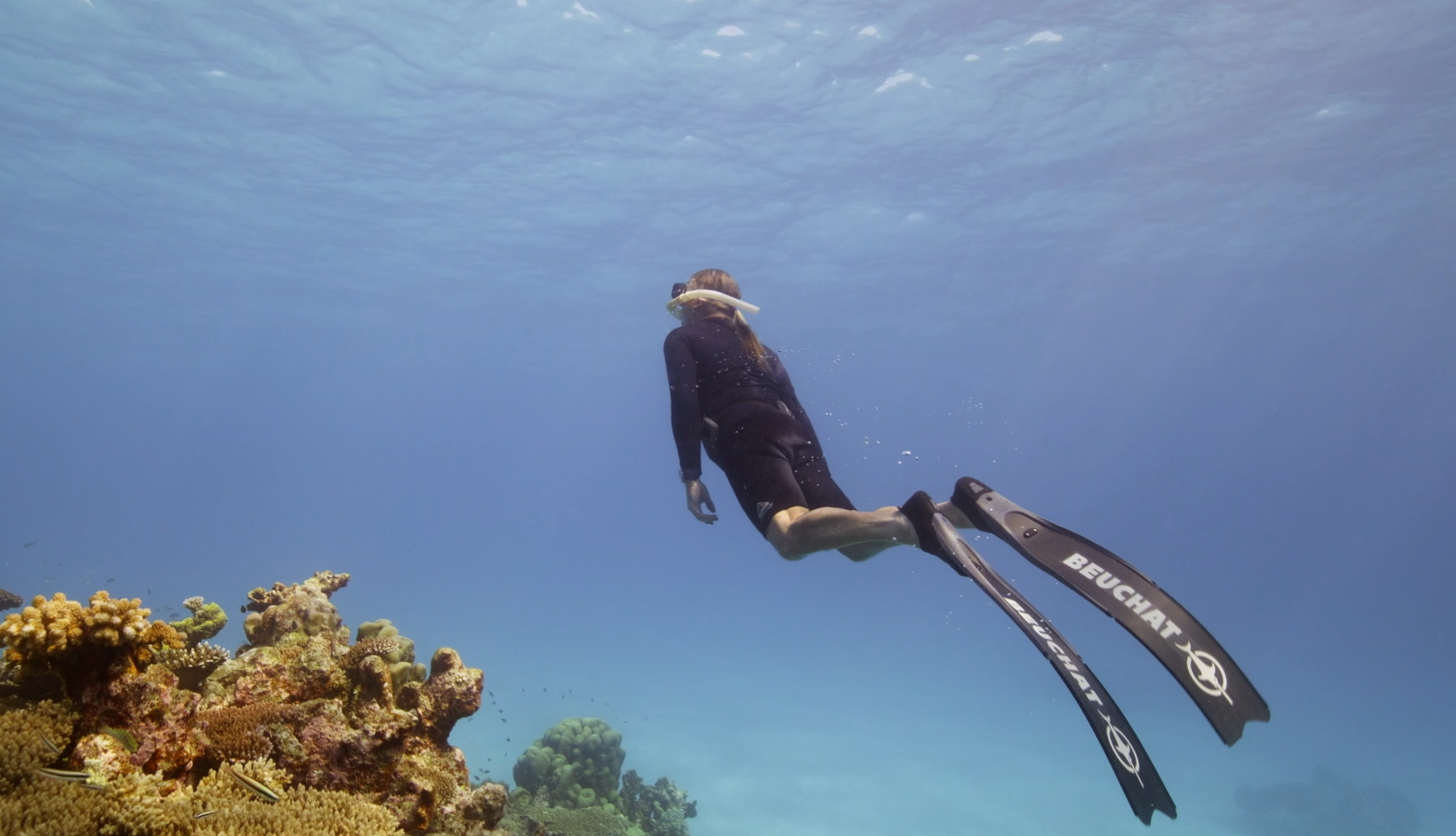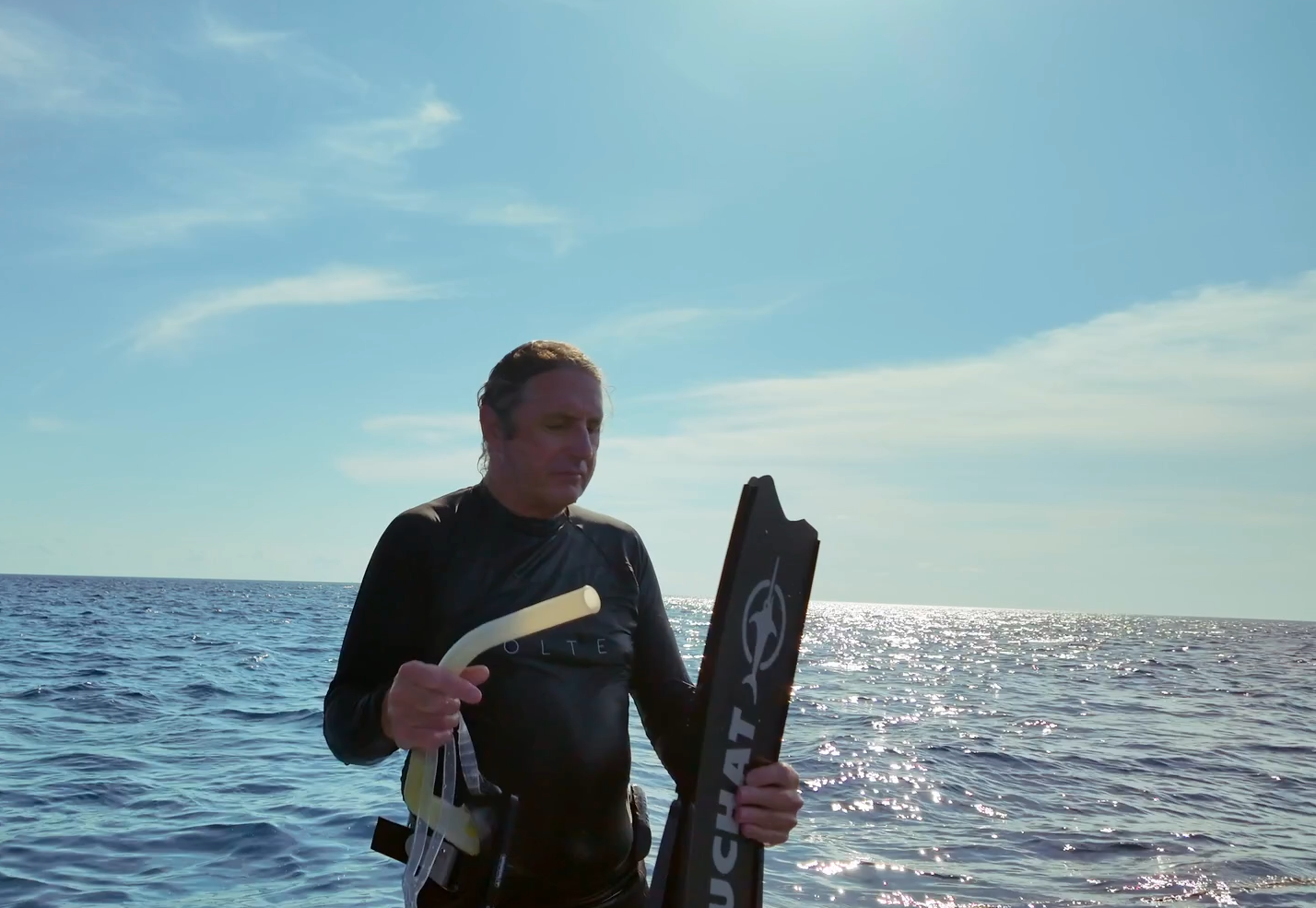Prologue
By Tim Winton
Late last spring, I was part of an expedition to Scott Reef, a magnificent coral atoll nearly 300 kilometres off the Kimberley coast. And while it was a privilege to be in such a remote and wonderful place, watching rare and endemic sea life drifting past, the moment I tipped from the boat in my mask and fins, I knew something was wrong.
The water was too hot. Not tropical-warm, but uncomfortably hot.
Our first dive was over a coral garden at the crest of a sea mount. But I struggled to concentrate on what I was seeing, because of an uncanny, skin-crawling sensation that came over me at the surface. When I took a breath and got down past 8 metres, the unpleasantness receded a little, but on the way back up it overtook me like the shimmery, woozy feeling you get before you faint.
“Is it just me,” I asked Dr Ben Fitzpatrick as we climbed back into the dinghy, “or is this water super-hot?”
The veteran marine scientist pointed to the boat’s sonar unit. The reading it gave was 35 degrees.
Our next dive was in the idyllic lagoon near Sandy Islet. As outgoing tide drained the shallows, the water grew pearly, almost opaque, like what comes out of the hot tap at home. Where the current drove down into the deep drop-off, the thermocline was visible – you could see the hottest water colliding with the cooler layers. At the surface, it was 36 degrees.
“Dear God,” I said. “It’s only November. Is this just a local anomaly?”
The way Ben dropped his mask at his feet and looked away to the horizon was not at all reassuring. I told myself the boat’s instruments were a little off kilter, imprecise at the very least.
But later that day, as the sun settled into the orange sea, Ben brought up the sea temp satellite models on his laptop. The imagery was horrible.
“You know where all this hot water is headed, don’t you.”
I nodded. The Leeuwin Current pushes south and drives tropical water inshore along the West Australian coast. This heatwave was headed for our shores.
The dread in that moment of recognition haunted me for the remainder of the trip.
In December, we heard the first reports of corals bleaching in the Kimberley. Further south, in January, 30,000 fish died en masse on the Pilbara Coast.
Soon after, Ningaloo Reef began to experience widespread coral bleaching. Early reports had sea temperatures 4 degrees hotter than usual.
As Ningaloo’s many gifted photographers and videographers began to document the reef’s distress, the scale of this event began to sink in. Coming so hard on the heels of the bleaching episode of 2022, this is tough to contend with. For many of us who love the reef, or depend on it for our jobs, the shock hasn’t yet given way to grief. Some cling to the hope that things look worse than they are, and that coral death will be minimal. Those of us who’ve been studying and defending Ningaloo for decades are trapped between rage and sorrow. Because we know this was a foreseeable calamity. It could have been avoided.
This is what thirty years of denial and delay has brought us. This is what current government policy settings produce, and what they’ll continue to inflict on our coral reefs unless we turn back from the brink right now.
Jane’s film alerts the world to the battle for Scott Reef. But it’s about more than one magnificent place – this is about our struggle to save all the world’s surviving coral reefs. Because Scott Reef is a sentinel. If we lose Scott Reef to the fossil fuel industry, we’ll have essentially lost the battle to save the world’s clearwater corals. That’s how important this fight is. That’s what’s at stake. That’s why we need to stop Woodside from unleashing its carbon bomb in the Browse Basin.
(adapted from Tim’s piece in The Guardian, 22 February, 2025)



